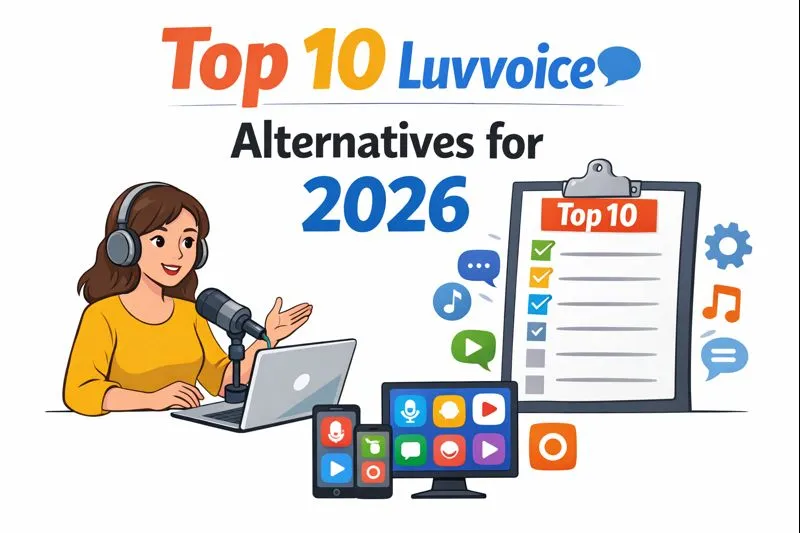Neural Vocoder Architectures
TL;DR
What are Neural Vocoders, Anyway?
Okay, so you're probably wondering what these "neural vocoders" thingies actually are, right? It sounds kinda sci-fi, but it's actually pretty cool stuff.
Basically, a vocoder is tech that encodes and compresses your voice. Think of it like a fancy compressor for audio–but, like, way more advanced. Originally, vocoders were all about making speech more efficient, but things are changing fast.
- Traditional vocoders use to be mostly for voice encoding and compression, making your voice data smaller, so it's easier to transmit or store.
- Now, with neural networks, vocoders are getting a serious upgrade. They're evolving beyond just compression and doing some seriously impressive things.
- And get this: vocoders play a huge role in text-to-speech (tts) systems. They are are the part that turns the text into something that sounds like a real person talking.
So, why all the fuss about neural vocoders? Well, they blow the old methods out of the water.
- Neural vocoders gives higher quality and more natural sounding audio than traditional vocoders. It's not even close, really.
- Neural networks learn complex audio features. They're like really smart students, picking up on all the subtle nuances of how we speak.
- This is having a big impact on ai voiceover and audio creation workflows, making it easier and faster to create realistic audio content.
According to arxiv, neural vocoders offer real-time high-quality speech synthesis on a wide range of use cases.
Ready to dive deeper? Next up, we'll get into some more details about how these neural vocoders actually work.
The Granddaddy: WaveNet
WaveNet, huh? It's kinda like the OG of neural vocoders, and it really shook things up when it dropped. Think of it as the reason we're even having this conversation about fancy AI voices.
- WaveNet uses an autoregressive model, which is a fancy way of saying it generates audio one tiny piece at a time. It's like painting a picture pixel by pixel.
- It directly models raw audio waveforms. So, instead of messing with features, it gets down and dirty with the actual sound data.
- Dilated convolutions are key. They help WaveNet understand long-range dependencies in the audio, so it doesn't sound like a jumbled mess.
WaveNet's a bit of a slowpoke, tbh.
- The computational cost is high, and inference can take forever. Generating audio one sample at a time is just really time-consuming.
- That's why they came up with Fast WaveNet and Parallel WaveNet. These are like souped-up versions designed to speed things up.
- Probability Density Distillation is a trick used in Parallel WaveNet. It's a technique where a smaller, faster model (the student) is trained to mimic the output distribution of a larger, more complex, and slower model (the teacher). The goal is to transfer the knowledge and quality of the teacher model to the student, allowing for much faster inference without a significant drop in audio fidelity. This is super useful for speeding up models like WaveNet that are inherently slow due to their autoregressive nature.
So, yeah, WaveNet is awesome, but it's got some quirks. Next up, we'll see how later models tried to fix those speed issues.
GAN-Based Vocoders: A Generative Revolution
Alright, so you've got these WaveNets that are kinda slow, right? That's where GAN-based vocoders come in to shake things up! They're like, "Hold my beer, I can make this way faster."
Generative Adversarial Networks (gans) are used for audio synthesis. Basically, you have two neural networks battling it out: a generator that makes audio and a discriminator that tries to tell if the audio is real or fake.
This push-and-pull leads to better audio quality than previous methods. It's like having a super-critical editor constantly improving your work.
To improve the audio quality and efficiency of GAN-based vocoders, researchers introduced techniques like multi-scale discriminators and multi-period discriminators. Multi-scale discriminators analyze the generated audio at different resolutions, ensuring that both fine-grained details and broader structures are realistic. Multi-period discriminators, on the other hand, focus on the repetitive patterns common in audio (like musical rhythms or speech intonation), helping to prevent unnatural repetitions or phasing issues. Together, these discriminators act as sophisticated quality control agents, scrutinizing the audio from various perspectives to ensure high fidelity.
For example, in the music industry, gans can generate realistic instrument sounds or even create entirely new musical pieces.
MelGAN and HiFi-GAN are two pioneering GAN-based vocoders that really improved both the audio quality and how efficient the process is. They're kinda like the new standard for fast, good-sounding ai voices.
Training large-scale gans for audio, like BigVGAN, is important for achieving high fidelity.
- Periodic activations and anti-aliased representations are important here. Periodic activations, often inspired by sine or cosine functions, help the model learn and represent cyclical patterns in audio more effectively, which are common in music and speech. Anti-aliased representations are crucial for preventing aliasing artifacts, which can occur when high-frequency information is misrepresented as lower frequencies, leading to unnatural sounds. By incorporating these techniques, BigVGAN can learn more complex audio patterns and avoid these undesirable artifacts, resulting in higher-fidelity audio synthesis.
- BigVGAN shows out-of-distribution robustness. This means it's good at handling audio data that's different from what it was trained on, like different speaking styles or background noises. This is crucial for real-world applications where the input audio might not perfectly match the training data.
Next up, we'll see how diffusion models are changing the game.
Diffusion Models: A New Wave
Okay, so diffusion models are making waves in the ai world, and they're starting to seriously impact neural vocoders. How? Let's break it down.
- DDPMs (denoising diffusion probabilistic models) are at the core of this new wave. They work by gradually adding noise to an audio signal until it becomes pure noise. Then, they learn to reverse this process, step-by-step, to reconstruct the original audio.
- Think of it like blurring a picture until it's just fuzz, then teaching an ai to unblur it.
- Applying ddpms to neural vocoders involves training a model to remove noise from audio, iteratively refining it until you get a clean, synthesized waveform. Here's a simplified idea of how it works:
- Forward Process (Noising): Start with clean audio. Gradually add small amounts of random noise over many steps. Eventually, the audio becomes indistinguishable from pure random noise.
- Reverse Process (Denoising): Train a neural network to predict and remove the noise added at each step. This network is trained on pairs of noisy and slightly less noisy audio.
- Synthesis: To generate new audio, start with pure random noise. Then, use the trained network to iteratively "denoise" it, step by step, gradually transforming the noise into a coherent audio waveform. Each denoising step refines the audio, making it more structured and realistic.
- This can be useful in generating audio for virtual reality experiences, where high-quality, noise-free sound is essential for immersion.
- there is a trade-off between generation speed and quality. More iterations of denoising usually mean better audio, but it also takes longer.
Next up, we'll look at ways to make these diffusion models run faster, without sacrificing quality.
Beyond Speech: Music and Universal Vocoding
Okay, so you've got your neural vocoders doing speech, but what about music? Turns out, that's a whole different ballgame.
- Handling polyphonic music is tough. You got overlapping instruments and vocals and it just gets messy real quick.
- Music has a much wider frequency spectrum, you know? It's not just voices, it's everything else too that gets really complex.
- Speech-specific vocoders often fall short because they just ain't build for that kinda complexity.
Now, there's this thing called DisCoder that's trying to tackle this. It's all about making high-fidelity music synthesis a reality. The idea is to use universal vocoding and neural audio codecs to get better sound quality. A "universal" vocoder aims to handle a much broader range of audio signals, not just speech, but also music, environmental sounds, and more, with high fidelity. This is achieved by learning more general audio representations. Neural audio codecs are key here because they can learn efficient and high-quality ways to represent audio signals, allowing for better reconstruction and synthesis across diverse audio types. Imagine using DisCoder to create realistic instrument sounds for a video game. Or maybe even generating entire musical scores for a movie soundtrack, that would be awesome!
Next up: Can we make one vocoder to rule them all?
Emerging Trends and Future Directions
Neural vocoders have come a long way, huh? But where are we headed next? Well, let's dive into some emerging trends and future directions.
- Real-time vocoding is becoming more achievable for live applications, like virtual concerts or interactive voice assistants. Imagine a musician tweaking their voice live on stage with ai effects, or a gamer changing their voice in real-time without any lag.
- Improving robustness and generalization is another key focus. Making these vocoders work reliably across different accents, languages, and recording conditions is super important for real-world use.
- Exploring new architectures and training techniques is always ongoing. Researchers are constantly trying out new neural network designs and training methods to squeeze out even better performance. For instance, FastFit is a novel neural vocoder architecture that aims for faster generation rates. It achieves this by replacing the traditional U-Net encoder with multiple short-time Fourier transforms (STFTs). The STFT breaks down the audio signal into its frequency components over short time windows. By using multiple STFTs, FastFit can process audio in parallel and extract relevant features more efficiently than a sequential U-Net, leading to significantly faster generation speeds without a noticeable drop in sample quality.
As researchers push the boundaries, neural vocoders are increasingly capable of delivering high-quality audio synthesis in real-time across a wide range of applications.
These advancements aren't just about better audio quality, it's about opening up new possibilities for creativity and communication. From personalized ai assistants to immersive gaming experiences, the future of neural vocoders looks hella promising.







